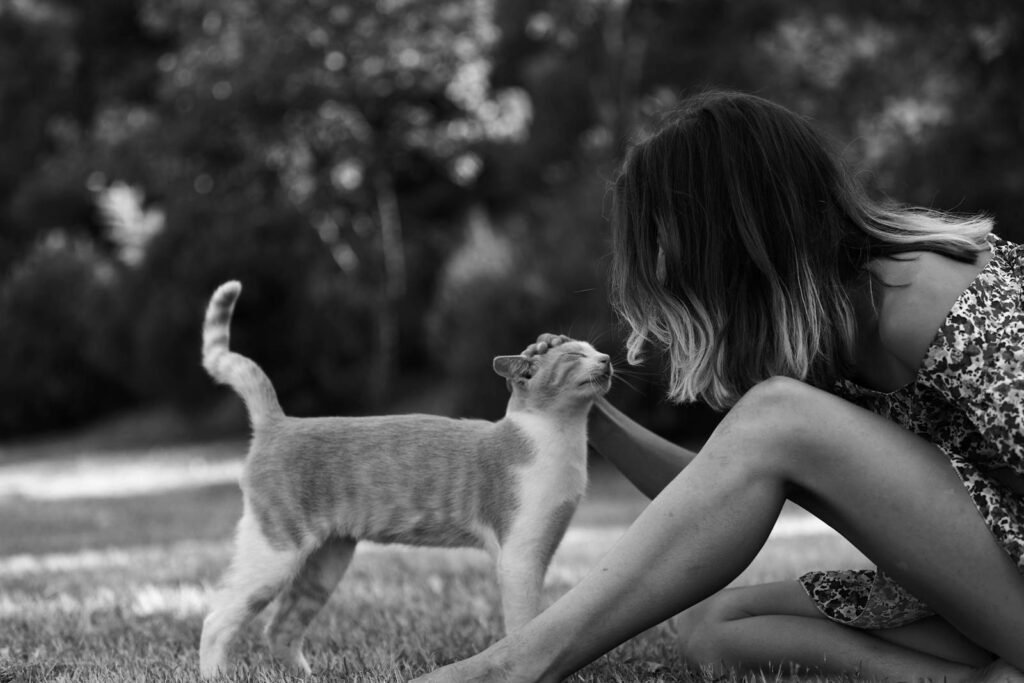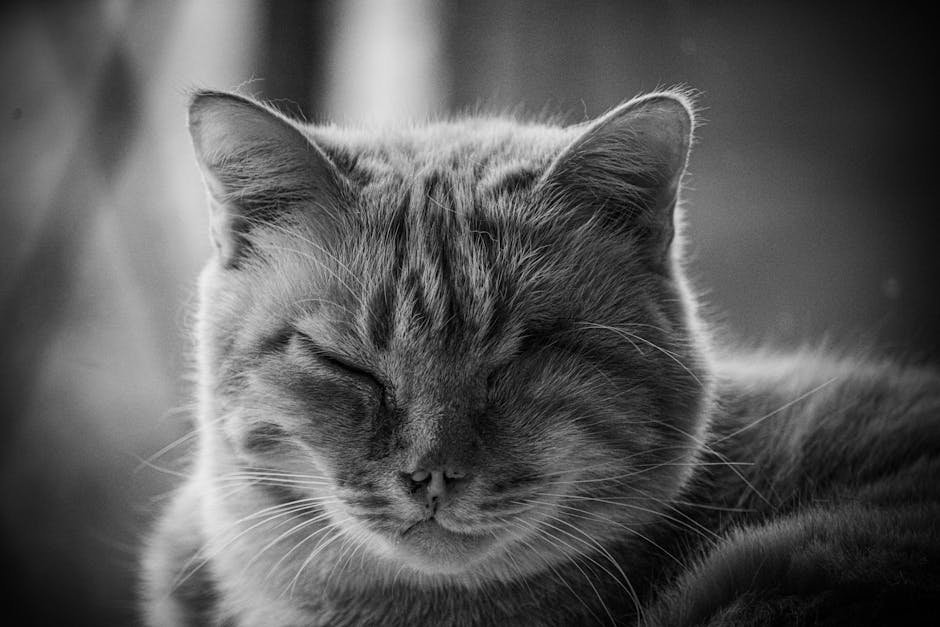Cats have long been admired for their mysterious demeanor and independent nature. But beneath those enchanting eyes and graceful movements lies a complex emotional landscape. Cats, like humans, exhibit behaviors that reveal their emotional intelligence. Here, we explore twelve fascinating things cats do that indicate their deep emotional intelligence.
Reading Human Emotions

Cats have an uncanny ability to read human emotions. They can sense when their owner is sad, stressed, or happy. This sensitivity often leads them to act accordingly, such as snuggling up to offer comfort or playfully engaging when they sense joy. It’s as if they have an invisible thread connecting them to our emotional world. This behavior showcases their ability to empathize with humans, much like a close friend who knows when you need a hug. Their understanding of human emotions is not just limited to their owners but extends to strangers as well, making them remarkable companions.
Communicating Through Body Language

Cats primarily communicate through body language, and their ability to convey messages without uttering a single sound is a testament to their emotional intelligence. From the flick of a tail to the tilt of a head, each movement speaks volumes. A cat’s slow blink is a sign of trust and affection, akin to a gentle kiss. Observing a cat’s body language can reveal a lot about its emotional state, whether it’s feeling playful, annoyed, or content. This sophisticated non-verbal communication allows them to interact seamlessly with both humans and other animals.
Problem-Solving Skills

Cats are natural problem solvers. Their curiosity often leads them to explore and understand their surroundings, finding solutions to challenges they encounter. Whether it’s opening a door or figuring out a way to reach a high shelf, their problem-solving skills are impressive. This ability is not just a sign of intelligence but also indicates their capacity to understand and navigate the world around them. Their strategic thinking and persistence in solving problems show a level of cognitive function that aligns with emotional intelligence.
Creating Social Bonds

Cats are social creatures, and their ability to form strong bonds with humans and other animals is a clear indication of their emotional intelligence. They often choose specific people or pets to befriend, showing loyalty and affection. These bonds are not formed randomly but are based on mutual respect and understanding. A cat’s ability to nurture these relationships reflects a deep emotional connection, similar to how humans form friendships. By understanding social dynamics, cats can thrive in a variety of environments, demonstrating adaptability.
Responding to Human Voice

Cats may not respond to their name like a dog, but they do recognize and respond to the tone and pitch of human voices. They can discern when they are being praised or scolded and adjust their behavior accordingly. This ability to interpret human vocal cues is another sign of their emotional intelligence. It shows their capacity to engage with humans on a deeper level, understanding not just words but emotions conveyed through speech. This responsiveness strengthens the bond between cats and their human companions.
Exhibiting Empathy

Empathy is the ability to understand and share the feelings of another, and cats exhibit this trait in surprising ways. They often comfort their owners during times of distress, sitting close or purring softly to provide solace. This empathetic behavior is not just a random act but a conscious effort to connect and support. Cats’ ability to mirror human emotions and respond with compassion is a profound indicator of their emotional intelligence. This empathy fosters a sense of companionship that enriches the lives of both cats and their owners.
Understanding Human Routines

Cats are highly attuned to human routines and habits. They quickly learn daily schedules, knowing when it’s time for meals, play, or rest. This understanding allows them to anticipate their owner’s actions and adjust their behavior accordingly. By aligning themselves with human routines, cats demonstrate an awareness of their environment and the people within it. This adaptability showcases their ability to integrate into human lives seamlessly, reflecting their emotional intelligence and capacity for understanding.
Displaying Individual Personalities

Every cat has a unique personality, and their ability to express individuality is a sign of emotional intelligence. Some cats are outgoing and social, while others are shy and reserved. This diversity in personality traits reflects their understanding of themselves and their place in the world. Cats’ ability to express individuality and adapt their behavior to different situations shows a level of self-awareness that aligns with emotional intelligence. This individuality is what makes each cat special and endears them to their human companions.
Adaptability to Change

Cats are known for their adaptability, whether it’s adjusting to a new home, family member, or routine. This flexibility is a testament to their emotional intelligence, allowing them to thrive in various environments. Their ability to cope with change and maintain emotional stability is similar to resilience in humans. By understanding and adapting to new situations, cats demonstrate a level of emotional maturity that is both remarkable and endearing. This adaptability ensures that they remain a cherished part of their human families.
Showing Affection

Cats may have a reputation for being aloof, but they are capable of showing deep affection. Whether it’s through gentle headbutts, purring, or kneading, their expressions of love are genuine and heartfelt. This ability to show affection is a sign of emotional intelligence, reflecting their capacity to connect with humans on an emotional level. Cats’ affectionate behavior strengthens the bond between them and their owners, creating a sense of companionship that is both comforting and fulfilling.
Sensitivity to Environment

Cats are highly sensitive to their environment, picking up on subtle changes that may go unnoticed by humans. This heightened awareness allows them to respond to potential threats or changes in their surroundings. Their sensitivity is not just a survival instinct but also an indication of their emotional intelligence. By understanding and reacting to their environment, cats demonstrate a level of awareness that enhances their ability to connect with humans and other animals. This sensitivity ensures their well-being and contributes to their overall emotional health.
Playfulness and Creativity

Cats’ playful nature is not just entertaining but a sign of their creativity and emotional intelligence. Their ability to engage in imaginative play, using everyday objects as toys, reflects their capacity for creativity and exploration. This playfulness is not just a way to pass the time but a means of expressing individuality and joy. Through play, cats explore their environment, develop social skills, and strengthen bonds with their human companions. Their playful behavior is a testament to their emotional depth and capacity for joy.
Cats are remarkable creatures, and their behaviors reveal a world of emotional intelligence that is both intriguing and endearing. From their ability to empathize and communicate to their adaptability and creativity, cats demonstrate a depth of understanding that enriches their relationships with humans. These twelve behaviors highlight the emotional intelligence of cats, offering a glimpse into the complex and fascinating world of our feline friends.

Linnea is a born and bred Swede but spends as much time as possible in Cape Town, South Africa. This is mainly due to Cape Town’s extraordinary scenery, wildlife, and atmosphere (in other words, because Cape Town is heaven on earth.) That being said, Sweden’s majestic forests forever hold a special place in her heart. Linnea spends as much time as she can close to the ocean collecting sea shells or in the park admiring puppies.






